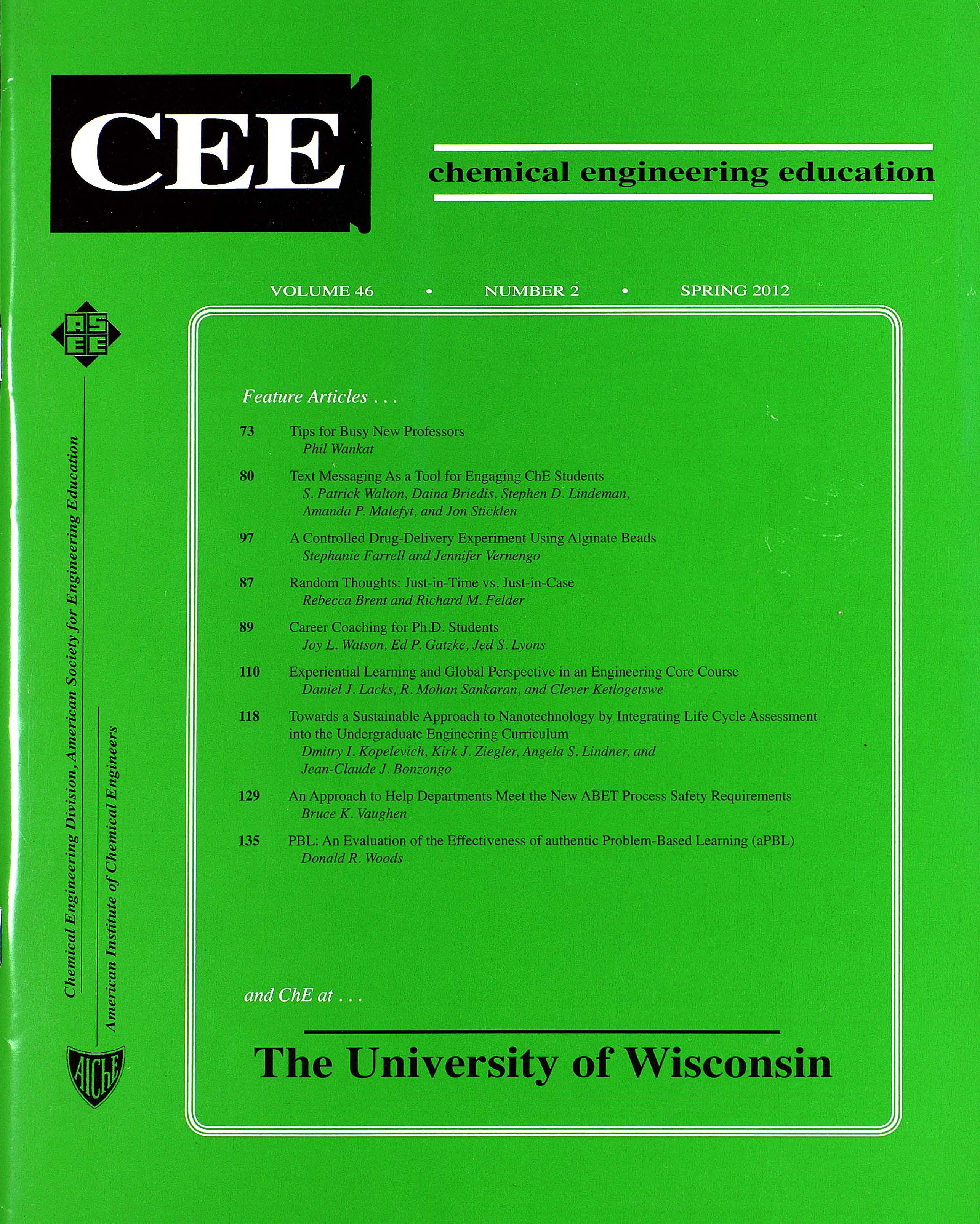A Controlled Drug-Delivery Experiment using Alginate Beads
Abstract
This paper describes a simple, cost-effective experiment which introduces students to drug delivery and modeling using alginate beads. Students produce calcium alginate beads loaded with drug and measure the rate of release from the beads for systems having different stir rates, geometries, extents of cross-linking, and drug molecular weight. Transient concentration data are then analyzed to characterize the release profile and rate and to determine the predominant rate controlling mechanism. The purpose of the experiment is to provide engineering students with basic skills relevant to drug delivery while simultaneously introducing or reinforcing concepts related to core science and engineering principles, design of experiments and data analysis, and engineering design.


